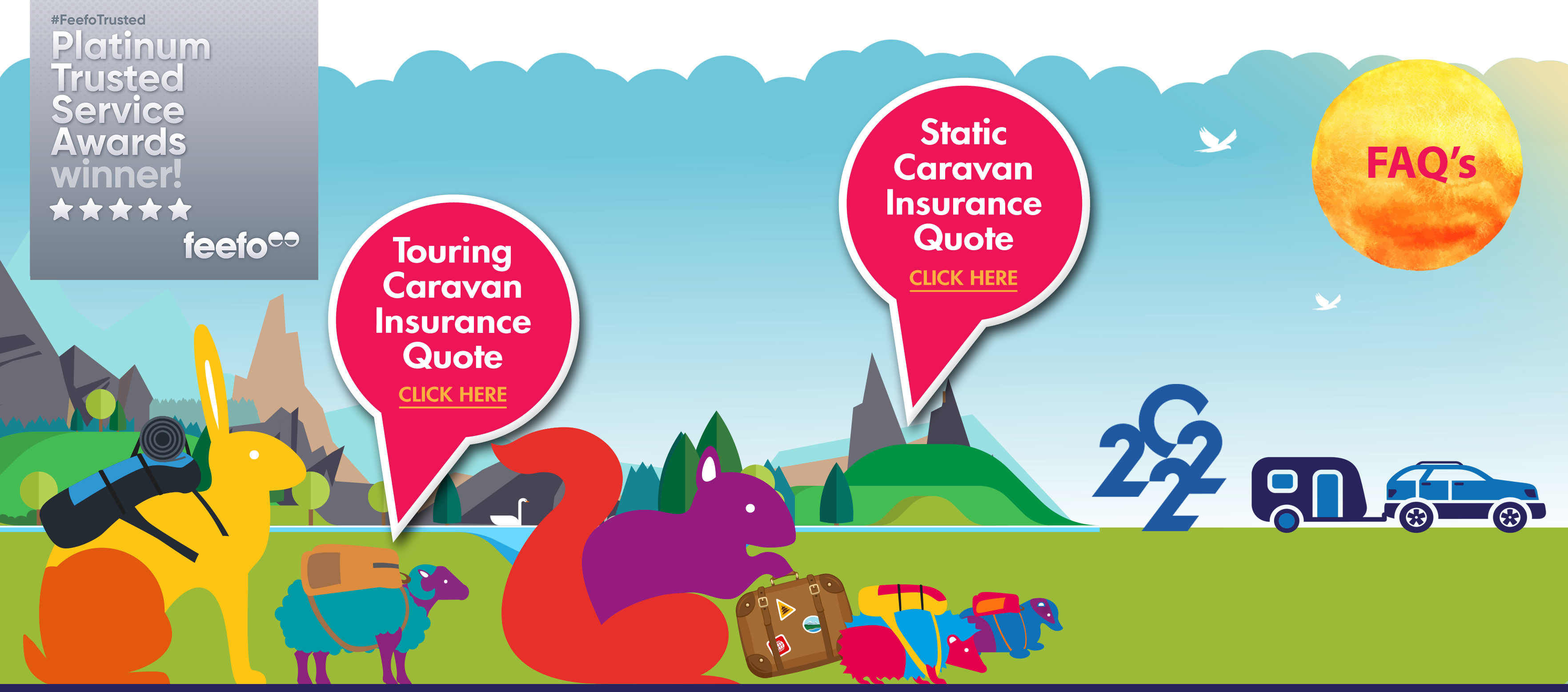Five destination ideas for seeing in the New Year in your ‘van
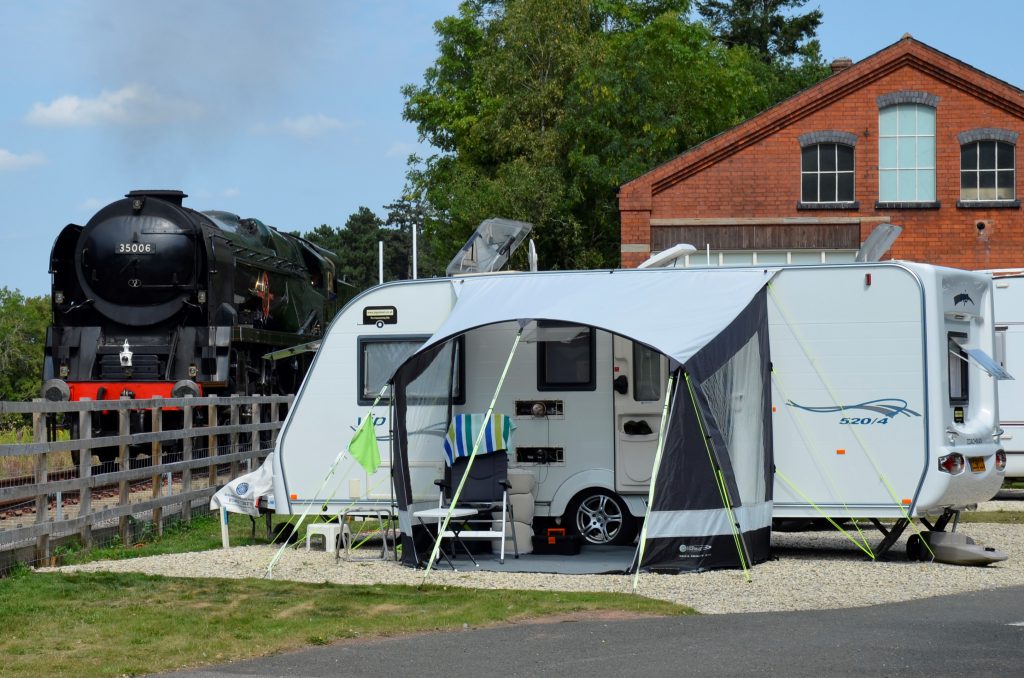
Your caravan may be a home away from home – and not just during the traditionally balmy spring and summer months. It might just as easily be an away from home base from which to see in the New Year quietly with a loved one or host a party with a difference for your friends.
All you need do is check that your caravan insurance is fully up to date, decide where you want to go, make your booking online and pitch up for the New Year holiday – so here are a few suggestions.
1.Adults only
You’ve spent Christmas with the children and family, why not use the New Year break for a complete change of scene by taking your touring caravan to an adults-only site?
The company Tranquil Parks highlights a wide range of sites for exclusive use by adults at many locations around the UK – with most of them open the year round, including New Year.
Chew Valley Caravan Park, near Bath, for example, offers plenty of all-weather pitches for touring caravans – all with 16-amp electric hook-up and fully serviced pitches with TV points, water and drainage points too. It is also dog-friendly.
This tranquil, adults-only caravan park is positioned just 800 yards from a picturesque fishing lake, and the surrounding countryside offers a paradise for birdwatchers and walkers alike.
Each pitch is equipped with an electric hook-up, while the park’s premium, heated toilet and shower facilities are refurbished every year for added comfort. A well-equipped utility room offers laundry and ironing facilities, including service washes.
Perfectly located near the historic city of Bath, famous for its spa and shopping experiences, the park provides easy access to Bristol, Wells, and Weston-Super-Mare. It’s an ideal base for exploring the Mendip Hills and discovering Somerset’s many attractions.
2.Tavistock, Devon
The Camping and Caravanning Club’s site at Tavistock in Devon offers stunning views of Dartmoor National Park, making it a perfect destination for outdoor enthusiasts.
The spacious campsite accommodates up to 75 units and provides modern amenities, including individual shower rooms, disabled facilities, and laundry services.
Visitors can enjoy scenic walks and cycling routes, with National Cycle Route 274 just 200 yards away. Tavistock, a nearby ancient market town, boasts world heritage status and is known for its charming cafes, shops, and historical architecture. Nearby attractions include Lydford Gorge and the picturesque village of Sheepstor, where War Horse was filmed.
3. Common Woods, Hertfordshire
Commons Wood Club Campsite is nestled against beautiful woodlands and offers easy access to nearby parks.
Located just 30 minutes from central London by train, it’s an ideal base for visiting the city’s exhibitions at venues like Olympia or Kew Gardens.
The campsite provides plenty of family-friendly activities, with Stanborough Park just two miles away, offering boating, fishing, and birdwatching at Reed Marsh Reserve.
The site is close to Welwyn Garden City, known for its rich history and planning, including the famous Roman Bath preserved under the A1 motorway.
4. Carnon Downs, Truro, Cornwall
Situated just three miles south of Truro, the Carnon Downs Caravan and Motorhome Club Campsite spans 20 acres of meticulously landscaped grounds, offering spacious pitches bordered by hedges and shrubs.
The nearby village of Carnon Downs offers a quaint mini-market, garden centre, and fruit farm. Truro, known for its stunning cathedral, lively weekly Farmers Market, shopping opportunities, and cultural landmarks, is easily reachable.
Loe Beach is a short distance away, offering an ideal spot for water sports, while Falmouth, with its scenic harbour, maritime museum, and sandy beaches, is also just a brief drive from the site.
For dining, there are three cosy inns within walking distance. The campsite provides the perfect base for exploring Cornwall, with picturesque walks along the River Fal and charming hamlets like Penpol and Devoran nearby.
5. Edinburgh Caravan and Motorhome Club Site, Scotland
If you’ve never celebrated Hogmanay, you’ve probably never properly celebrated New Year – at least that’s the claim of the Scots.
So why not join them in their capital at this special time of the year and book your pitch at the Edinburgh Caravan and Motorhome Club site right on its doorstep?
The campsite itself is large (146 pitches) but set in 12 quiet and peaceful acres – unlike the centre of Edinburgh, of course, where you’ll hardly hear yourself speak above the tumult of revelries.
The Edinburgh Club Campsite is the perfect location for a holiday, set along the Firth of Forth and offering easy access to the vibrant city of Edinburgh.
The campsite is ideal for exploring the city’s modern and historic attractions, such as Edinburgh Castle, home to the Scottish Crown Jewels, and Holyrood Palace, the King’s official Scottish residence.
You can also stroll through Princes Street Gardens, visit the Scottish Parliament Building, or enjoy the city’s famous festivals. The campsite is close to the waterfront, where campers can enjoy walks along Cramond promenade, or venture to Portobello for its pubs, restaurants, and shops. The site also places you near golf courses, Edinburgh Zoo, and plenty of entertainment venues.
Have bike, will travel!
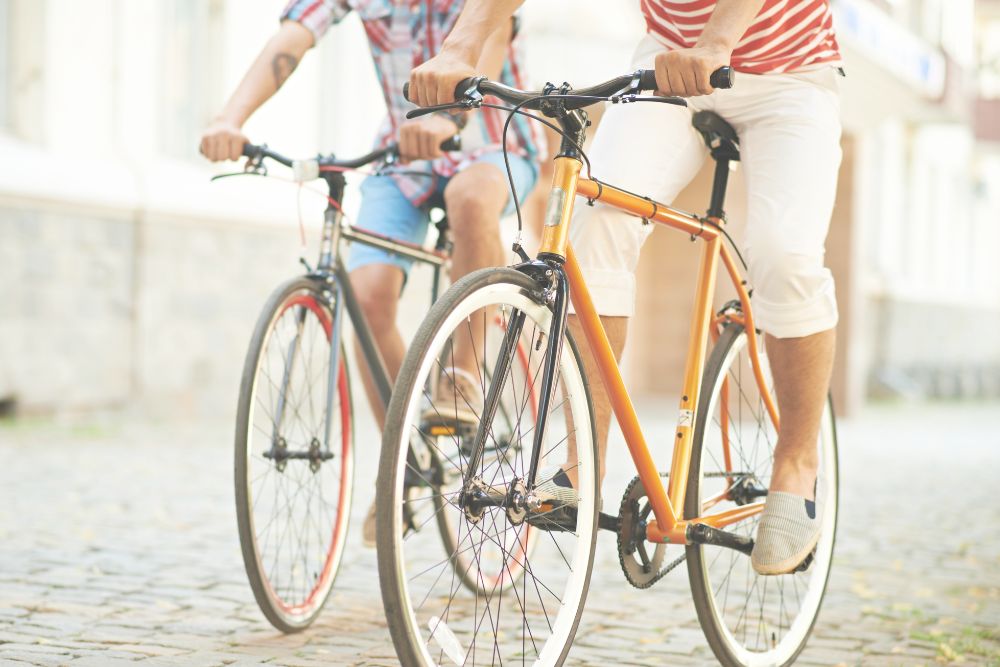
It must be all that open air and the freedom of the outdoor life, but, by and large, the average touring caravan owner turns out to be a pretty fit and healthy individual.
Combine the outdoor life with a spot of cycling on the bike you’ve managed to stow in your caravan, and you can enjoy the fresh air, new sights and sounds! Great for you physically and mentally.
With your thoughts turned to the fitness benefits of cycling, you might also want to consider a whole range of other activities in which you can engage while out and about with your caravan. You might even want to pay some attention to maintaining a healthy environment inside your caravan.
Let’s take a closer look at caravanning, biking, other fitness routines, and how to stay just as fit and healthy indoors as out.
Your bicycle
- it is a well-established fact that cycling helps to keep you fit – Circle Health Group have listed at least ten ways in which cycling can benefit your physical and mental wellbeing;
- if you are a caravan owner, cycling can also widen the radius of your adventures and bring even more fun to your forays from the caravan site you might have chosen;
- if you are not averse to cheating just a tad, you might even consider an electronically powered bike – it might take away a lot of the effort, but just think of all that fresh air you get to enjoy;
- however, that said, an electronic bike might not be the labour-saving cop-out you might think it to be – as the website MiRider suggests, think of the electric motor offering a helping hand rather than taking over completely. You still need to pedal – just less so. You get more power with less perspiration. You can read our article Choosing an electric bike for more information;
Countryside walks
- the only investment required for keeping fit through plenty of countryside walking is in a good pair of hiking boots;
- the exercise is free, and the UK offers a whole host of caravan sites from which you can set forth in order to enjoy the country’s green and pleasant land – the Caravan and Motorhome Club even has a guide to those caravan sites likely to offer the best opportunities for walking;
Running in tune to the dawn chorus
- if you are feeling more energetic and want to do your exercise to the accompaniment of the birds’ dawn chorus, you need only don your running shoes and go for a jog around the park or venture out into the early morning countryside;
- there might not be the same rousing call to herald a new day, but running at dusk might also give a welcome endorphin boost before you tuck in at night;
- of course, there are benefits no whatever time of day you choose to run;
Wild swimming
- it has fast become something of a craze – and for good reason too – since wild swimming is free and readily found in many different lakes, rivers, and the sea;
- in an island community such as the UK, your caravan site is rarely going to be far from the sea or the rivers emptying into it – so why not join the growing band of wild swimmers;
Pilates and yoga
- pilates and yoga may be ways of keeping not only your body fit but also providing food for your mind and soul;
- just pick up your favourite mat, position it outside your caravan and breathe in the peace, tranquillity, and sheer serenity of Britain at its rural best;
Healthy interiors
- keeping yourself busy with all these fitness trips is all very well, but unlikely to be any avail if your living quarters let you down on the health front;
- keeping the interior of your caravan clean, tidy, and free of bugs is a must, of course, but there are more insidious threats to health that might slowly build up;
- chief amongst these is the mould which might take hold on the inside of your caravan as a result of poor ventilation and the presence of damp;
- left unchecked, damp and condensation may result in floors and walls simply rotting away;
- the mould that breeds in these conditions generates a pungent and unpleasant smell and carries a veritable “minefield” of risks to your health – and Caravan Talk lists five of the harmful effects of mould and mildew;
- regularly check, therefore, for mould, stains, or bumpy panels – especially if a tell-tale smell is also present;
- a final health and safety warning might also be sounded about fire hazards and the use of bottled gas within the confines of a touring caravan;
- fire safety precautions may not need a great deal of rehearsing – but are no less important for all that – while poorly maintained or ill-ventilated gas appliances may lead to a build-up of lethal carbon dioxide.
Have (an electric) bike, and you might well travel in style and precious little effort in helping yourself to keep fit. But there are many other ways of staying healthy while enjoying your touring caravan outings too.
Continue working on keeping yourself fit in the great outdoors, and remember that it is equally important to maintain a safe and healthy environment inside your caravan.
Further reading: Portable exercise equipment for your caravan
Swift’s new Sprite Exclusive, 2024 Caravan Owner Satisfaction Awards, Lickpenny joins the Club, and other UK caravanning news

Are you interested in some of the latest UK caravan news and holiday trends? Then you’re in luck! Just read on …
Swift announces new Sprite Exclusive launch for 2025
Swift – the East Yorkshire-based manufacturer of caravans and motorhomes – has announced a new series of models to complement its already highly popular range of Sprite motorhomes.
Just as the name suggests, the Sprite Exclusive range is a notch above others in the same stable. The enhanced, premium features boost the motorhome’s overall style and comfort – with family use especially in mind.
The internal upholstery – from the choice of fabrics to the pleated blinds and wall pads – gives a genuine sense of luxury. Attractively concealed lighting adds to the calm and welcoming ambience.
The cleverly designed galley incorporates a 142-litre refrigerator and 15-litre freezer compartment from Thetford while the Wi-Fi harness and wireless phone charging pad help you to keep in touch with the wider world – with everything controlled from a central 4” touchscreen.
Practical Caravan Owner Satisfaction Awards 2024
Some of the most hotly contested caravan awards are those for owner satisfaction. The current Caravan Owner Satisfaction Awards – co-hosted by Practical Caravan and the Camping and Caravanning Club – again this year include many prizes. The leading categories are:
New Caravans
- streets ahead of the rest of the competition in this category is the Slovenian manufacturer Adria – which has walked away with the Gold Award;
- the Silver Award went to the Hull-based manufacturer Coachman, while in third place was another UK manufacturer, the Elddis group based in County Durham;
Pre-loved Caravans
- among the second-hand or pre-loved caravans, first place was awarded to Eriba of the German Erwin Hymer group;
- second place was awarded to Coachman and in third place was Adria.
Caravan and Motorhome Club adds Lickpenny Matlock Club Campsite to its network
The Caravan and Motorhome Club has expanded its network of sites through the purchase of the renamed Lickpenny Matlock Club Campsite.
Situated near the village of Tansley in Derbyshire, the 16-acre park is between the tourist hotspots of both Matlock and Bakewell. Thanks to the park’s previous use as established nursery gardens, there are still plentiful mature trees, interlaced with fully-grown rhododendrons. These help to mark out more than 120 well-sized pitches on hardstandings that are suitable for caravans, campervans, and motorhomes.
Every pitch has its own 16-amp electricity hook-up, and some are fully serviced, not just with electricity but also fresh water and drainage facilities. Onsite there are also two electric vehicle (EV) charging points.
There are two centrally-heated washrooms with adjoining laundry rooms, washing up, and vegetable preparation areas.
The park incorporates a woodland walk – making the site a dog-friendly destination.
Changes to the Elddis Avanté range for next year
Practical Caravan on the 17th of September featured important changes to the Elddis Avanté range of twin-berth caravans for the coming 2025 season.
The revised layout of the entry-level Avanté 520 features its largest washroom yet and adopts a similar end-washroom layout for the existing Affinity 520 caravans.
The new 520 brings the number of Avanté models to six. Each has been restyled with interiors now sporting Maya upholstery, highly-coloured cushions scattered about, and a light wood finish to all the fitted furniture.
Buxton: Things to do and see
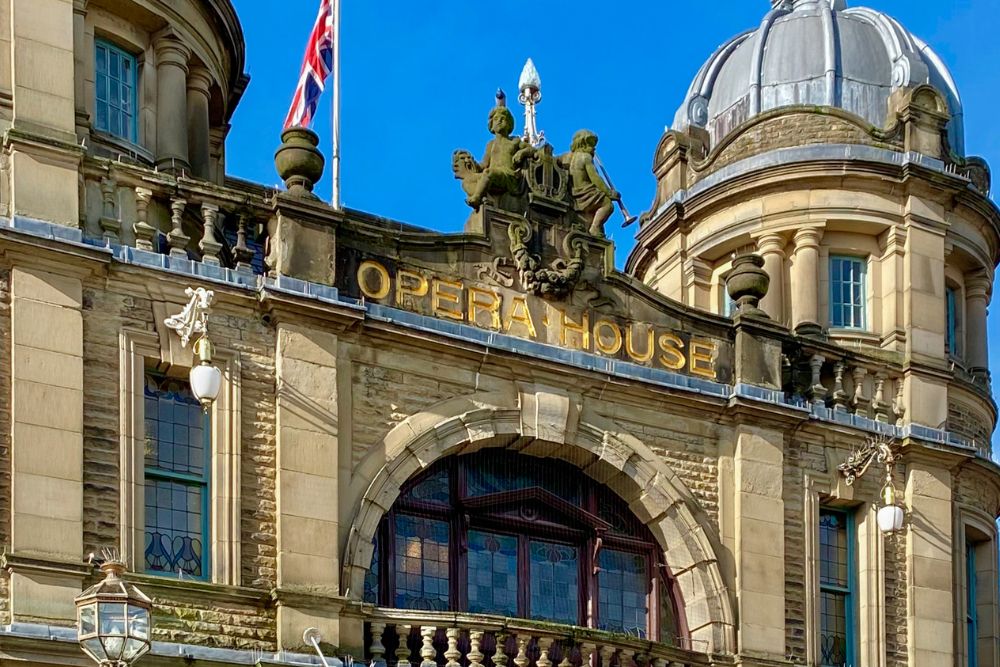
Set in the glorious countryside of the Peak District, the charming spa town of Buxton has lots going for it. And the good news is that this jewel in the East Midland county of Derbyshire is readily accessible from practically any part of the UK.
Buxton offers the perfect destination for a spot of adventure, a relaxing escape, or a bit of both. Let’s see why.
The Pump Room
Buxton’s thermal springs prompted a 19th-century craze for “taking the waters”. Indeed, the health-restoring pastime became so popular that the well at the town’s Natural Baths became seriously overcrowded. In response, in 1894, the 7th Duke of Devonshire, Henry Curry, built The Pump Room – now a Grade II-listed building.
Although The Pump Room has not been used by anyone taking the waters since the 1970s, the newly refurbished building is now home to the Buxton Visitor Centre. It’s the starting venue for the Buxton Crescent Heritage Experience and where you’ll find festival performances staged along with other meetings and events. During the school holidays, for instance, there are pop-up art displays and talks on a wide range of subjects.
If you want to enjoy a thermal dip in healthy minerals, then you can visit the Natural Mineral Baths which are now at the Buxton Crescent Wellness Spa.
Buxton Natural Mineral Water Plant
Buxton is, of course, renowned for its spring water and it’s hardly surprising that the branded Buxton Natural Mineral Water is a popular bottled water in the UK. The bottling plant, at Waterswallows in the town, is owned by Nestle. Corporate tours of the factory are organised from time to time.
St Ann’s Well
You don’t need to wait for a tour of the factory or even splash out on a bottle of branded Buxton’s water, you can drink your fill for free at St Ann’s Well, which you can find at the bottom of The Slopes next door to The Pump Room.
People have been drinking from this public source of thermal spring water for centuries – in 1678, the political philosopher Thomas Hobbes claimed that the well: “cures the palsied members of the old, and cherishes the nerves grown stiff and cold”.
Buxton Crescent
Buxton Crescent – a Grade I Listed building in the Palladian style – is the town’s showpiece.
It was built in the 1780s by the 5th Duke of Devonshire, William Cavendish, and an architect from York, John Carr. The stately building soon became one of the most architecturally significant buildings in Britain and its star-studded guests came to take the waters fed by the neighbouring St Ann’s well.
Having fallen into structural disrepair, the hotel was forced to close its doors in the 1990s. Thanks to the Buxton Crescent Heritage Trust, the National Lottery, and local councils, a £70 million restoration project was undertaken, and the iconic building reopened in 2019.
Visit The Opera
For a cultural fix, head to the Buxton Opera House, a stunning Edwardian theatre designed by Frank Matcham, where you can enjoy everything from plays and concerts to the annual Buxton Festival.
Buxton Country Park
If you’re fit for some exercise, the woodland trails through Buxton Country Park offer more adventurous walking and hiking through stunning countryside. The woods cover some 100 acres (40 hectares) mainly of ash, beech, elm, and sycamore, providing cover for lots of woodland wildlife and flora.
The literal high point of your walk is likely to be Solomon’s Temple (just over a 3-mile walk from the Pavilion Gardens car park) which is more than 1,400 ft (439m) above sea level and affords panoramic views across the whole of the Peak District.
The country park is also home to the stunning geological miracle of Poole’s Cavern. The main chamber of the natural cavern is the size of a cathedral and has been used as a place of worship and shelter since prehistoric times. Along well-let passageways deep underground and alongside the ancient course of the subterranean river you can take the 45-minute guided tour.
Visit Buxton
Buxton is a town that beautifully combines history, culture, and nature. Whether you’re soaking in the thermal baths, hiking through the Peak District, or enjoying a show at the Opera House, Buxton provides a serene yet vibrant escape from everyday life. With its stunning surroundings and rich heritage, Buxton is a must-visit destination for anyone exploring the UK.
The popularity of touring caravan holidays
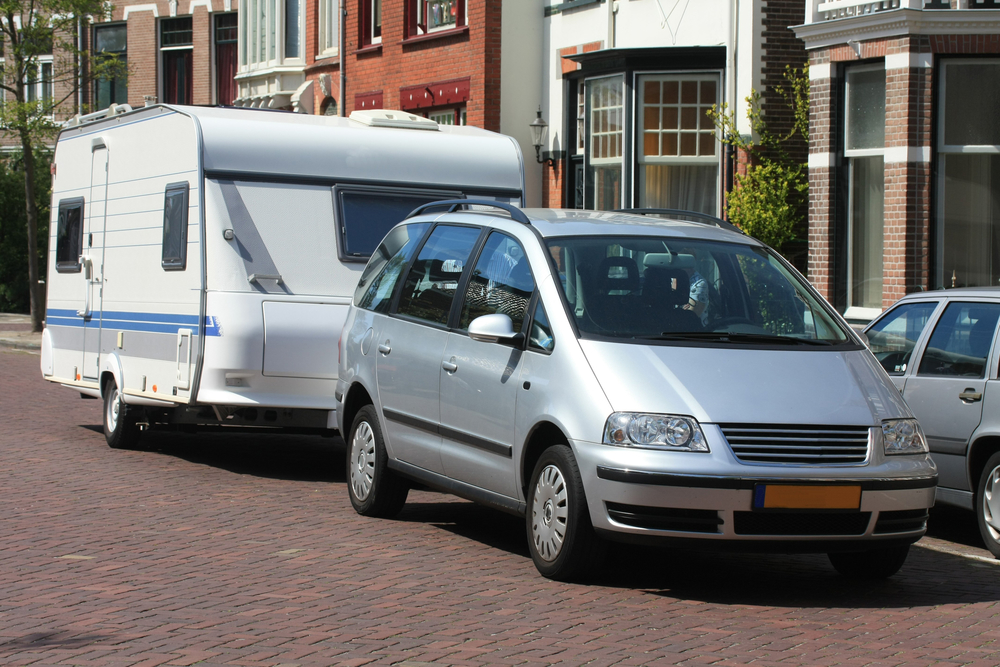
Some people might tell you that the heyday of touring caravan holidays in the UK were the decades running from the end of the 1940s through to around the earlier 1970s. In the austere days after the Second World War, the attractions of overall low-cost holidays meant that statics, caravan parks and holiday camps, were the mainstay of much British holiday making.
Whilst it is true that the advent of cheap flight-fuelled mass tourism to the Mediterranean in the 1960s and 1970s dented popularity of the holiday caravan somewhat, things have changed significantly over more recent times.
Why is this?
British resorts / sites have learned lessons
Going way back to the 1970s, one reason increasing numbers of British holidaymakers fled overseas each year for their holiday break was not only the advent of cheap flights but also the rather indifferent state of many British resorts. Some, including some touring caravan sites, hadn’t really done much to improve their facilities since the 1950s – and that carried on even into the 80s and 90s.
All that now has changed though. Huge sums have been spent in the past few decades in order to bring UK touring campsites and holiday parks up to 21st century standards. Now the facilities are often excellent and designed with the caravan communities needs in mind rather than just expediency. There are plenty of holiday parks offering electric pitches as well as luxury touring caravan sites with on-site bars and restaurants if you don’t fancy preparing your own food.
A re-discovery of the UK
The UK has scenery and natural beauty and many attractions that compares very favourably with any major holiday destination in the world.
In past decades, going abroad for a holiday was trendy and fashionable. Today, that’s less so and – particularly since the pandemic – people are re-discovering the beauty and grandeur of their own country and all it can offer.
And it’s no wonder, with the UK offering a beautiful coast line, quaint inland villages and forests, theme parks and even caravan adventure holidays!
What are the benefits of a touring caravan holiday?
Having a staycation in your caravan offers several benefits that make it a great choice for a relaxing and enjoyable holiday. Here are some of the key reasons touring caravans are popular …
Cost-effective
A staycation in your caravan can save you money on accommodation and travel costs. You avoid expensive hotels, flights, and other transportation fees, allowing you to enjoy a more budget-friendly holiday without compromising on fun or comfort.
Flexibility and freedom
With a caravan, you have the freedom to explore different locations at your own pace. You can choose when and where to travel, allowing for spontaneous trips or extended stays in your favourite spots. Unlike fixed accommodation, you aren’t tied to one location.
Closer to nature
Caravan sites are often located in scenic areas, such as national parks, forests, or near the coast. Staying in your caravan allows you to be closer to nature, enjoy outdoor activities like hiking or cycling, and unwind in peaceful surroundings.
Comfort and familiarity
Caravans offer a comfortable, home-like environment where you can have all your personal belongings and necessities on hand. You can bring your favourite food, bedding, and even your pets, creating a more familiar and relaxing atmosphere compared to staying in hotels.
You can choose your environment
A caravan staycation allows for greater control over your environment making it easier to avoid crowded areas, especially during busy travel seasons.
Pet-friendly
Many caravan parks are pet-friendly, meaning you can bring your pets along with you on your holiday. This removes the need for pet sitters or boarding, and your furry friends can enjoy the adventure with you. Read our Guide to caravanning with pets.
Reduced travel stress
By staying local and using your caravan, you avoid the stress of international travel, such as airport security, delayed flights, or lost luggage. It’s a hassle-free option where you can start enjoying your holiday as soon as you set off.
Environmental benefits
A staycation in your caravan can have a lower environmental impact compared to flying or driving long distances. It’s an eco-friendly way to explore local attractions and support sustainable travel.
Explore local attractions
A caravan staycation allows you to discover hidden gems close to home. You can explore local countryside, beaches, heritage sites, and attractions that you may have overlooked, giving you a new appreciation for your local area and beyond.
Quality time with family
Caravanning is perfect for spending quality time with family or friends in a cosy, relaxed setting. Whether you’re cooking meals together, playing board games, or exploring nature, it’s a great way to bond and create lasting memories.
Overall, a staycation in your caravan offers flexibility, comfort, and cost savings, while allowing you to enjoy the freedom of travel and the beauty of the outdoors.
What about the British weather?
This is, of course, an old chestnut and one that can’t be ignored.
Nobody is ever going to pretend that the UK is likely to have a reliable Mediterranean summer. What might be called “iffy” weather is always a possibility.
However, two factors in recent years are reducing these concerns:
- climate change is leading to typically warmer summers;
- UK resorts and caravan sites are simply much better prepared to offer poor weather entertainment than they were say a decade or more ago.
So, if you get the odd rainy day, it’s not a disaster. In fact, there are touring pitches that stay open all year round and aren’t seasonal – because today’s innovative touring caravans means you’ll be warm and cosy whatever the weather.
And, perhaps the best thing about staying in a caravan is that in the unfortunate event that it does rain, there is nothing that quite beats the feeling of being cosy in your tourer, hearing the pitter patter of raindrop on the caravan rooftop!
Caravanning really can be a fun, rewarding experience. If you are one of the few people who haven’t yet tried it, maybe your next holiday could be the one where you do!

